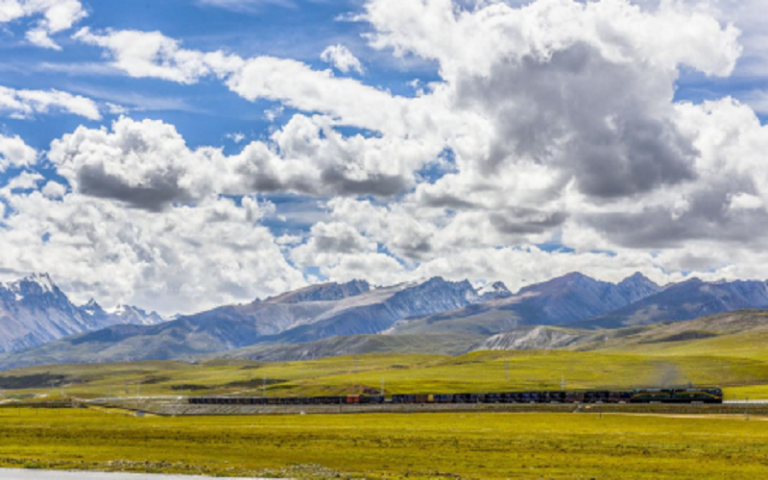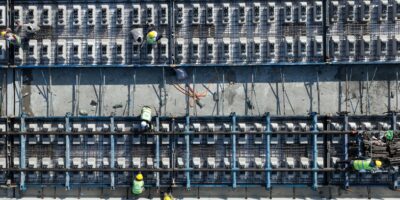
By Sheng Yulei,
How do migrating fish overcome a 63-meter-high dam?
The answer is artificial fishways. At the Huangjinxia water control project in Hanzhong city, northwest China’s Shaanxi province, a 1,908-meter-long ecological fishway extends upward along the dam.
The water control project is the major water source of the Hanjiang-to-Weihe River water diversion project, which brings water from Hanjiang River, the Yangtze River’s biggest tributary, to Weihe River, the Yellow River’s biggest tributary, to meet the water demand in central part of Shaanxi province.
About 3,000 fish migrate at the dam every day during the spawning season, thanks to the water replenishment channels, fish gathering channels, and fish entry holes built by the fishway.
“Since the design stage of the project, we have planned to build an eco-friendly fishway to ensure the smooth migration of fish species in Hanjiang River, considering their migration and spawning characteristics,” explained a staff member of the Huangjinxia hydropower station.
Eco-friendly designs such as fishways, bird corridors, culverts, and green bridges have become essential for major engineering projects in China, offering a unique perspective on the high-quality development of the country.
From bays to mountaintops, from plains to deserts, China’s major engineering projects are increasingly embracing green and innovative approaches.
The Qinghai-Xizang Railway, which links northwest China’s Qinghai province and southwest China’s Xizang autonomous region, is the highest and longest plateau railway in the world. To protect the plateau ecosystem and biodiversity, a total of 1.54 billion yuan ($215 million) was invested in ecological conservation along the railway when the construction started.
Besides, 33 dedicated passages were built to facilitate the migration of local wildlife. Train conductors are strictly prohibited from sounding the horn when passing through the passages to minimize the disturbance to wildlife.
The roof of the Xiong’an Railway Station in Xiong’an New Area, north China’s Hebei province, is a photovoltaic power station, with 17,700 polycrystalline silicon photovoltaic panels installed, which can generate 5.8 million kilowatt-hours (kWh) electricity on average annually.
The roof can save 1,800 tonnes of standard coal and reduce carbon dioxide emissions by 4,500 tonnes on an annual basis, which is equivalent to planting 12 hectares of trees.
During the construction of China’s Hong Kong-Zhuhai-Macao Bridge, the longest bridge-and-tunnel sea crossing in the world, the population of Chinese white dolphins, an endangered dolphin species under first-class state protection in China, increased from 1,200 to over 2,000.
The mega-project marks more than a step forward for China in bridge construction, but stands as a symbol of the harmonious coexistence between humans and the ocean in the country.
China attaches great importance to harmony between humanity and nature in its development planning.
Based on the carrying capacity of resources and the environment, the country has been cultivating new growth drivers and advantages through high-level environmental protection.
By effectively reducing the resource and environmental costs of development and continuously enhancing the potential and momentum of development, the country has managed to improve economic, social, and ecological benefits.
The innovations and breakthroughs in China’s major projects make it easier to understand the deep connotation of “new productive forces are in itself green productive forces.”
For instance, during the construction of the Shenzhen-Zhongshan Link, a mega cross-sea passage in south China, builders faced the challenge of transporting 5,035-meter-long prefabricated immersed tubes from the manufacturing base to the construction site, a distance of roughly 50 kilometers, using floating transportation.
The project team came up with a creative idea to build an integrated ship for transporting and installing the immersed tubes, leading to a reduction of dredging volume by over 10 million cubic meters and exhaust emissions by about 1 million cubic meters compared to traditional towing methods.
China defined the harmony between humanity and nature as a key feature of its drive to advance Chinese modernization.
In order to promote innovation in development models, it is crucial to uphold the principle that lucid waters and lush mountains are invaluable assets, accelerate innovations in green technologies and the application of advanced eco-friendly technologies, integrate digital and intelligent development with green endeavors in industrial development, thus laying a solid green foundation for high-quality development.
China attaches equal importance to protection and development when formulating plans for major engineering projects.
Focusing on the big picture while also paying attention to details, the country has proactively adopted proactive strategies for its major engineering projects, ready to create more miracles and write a new chapter of Chinese modernization featuring harmonious coexistence between human and nature.










